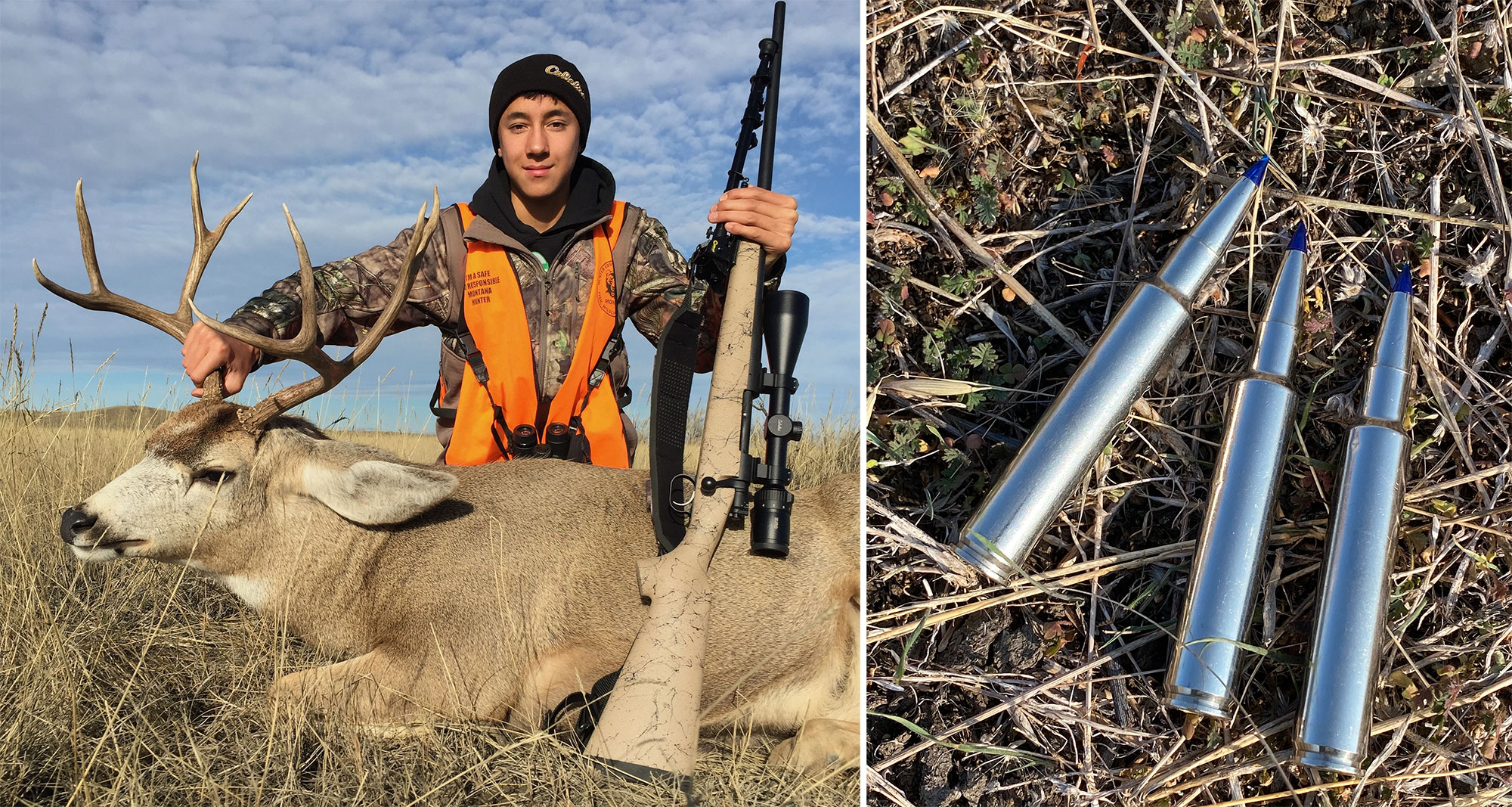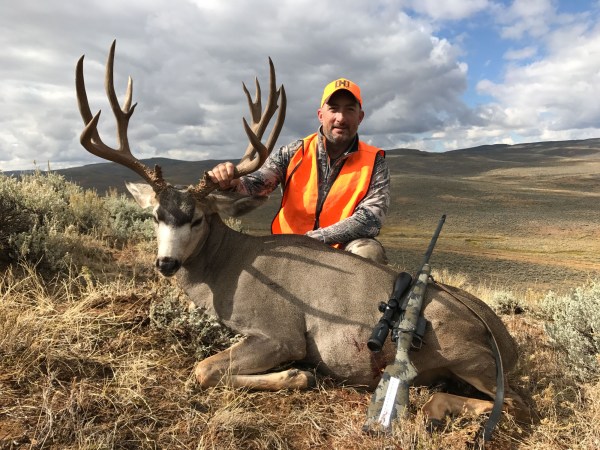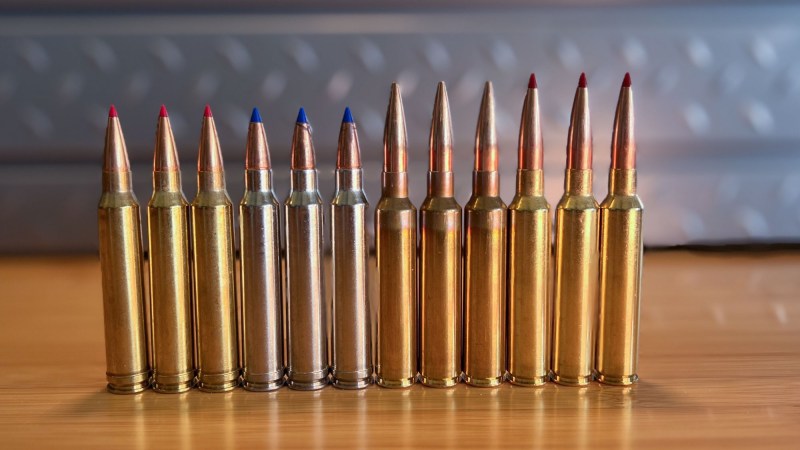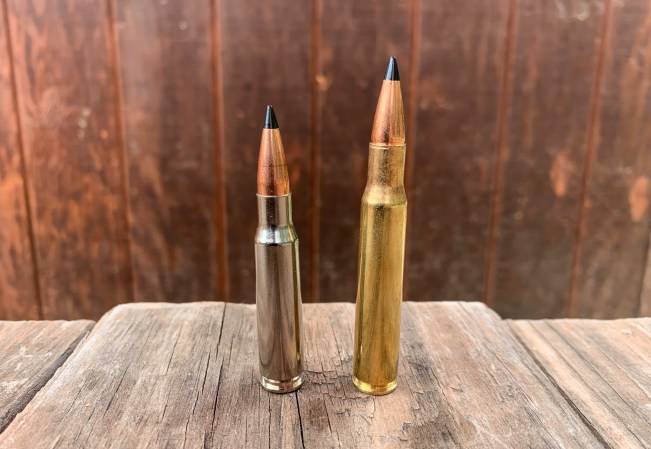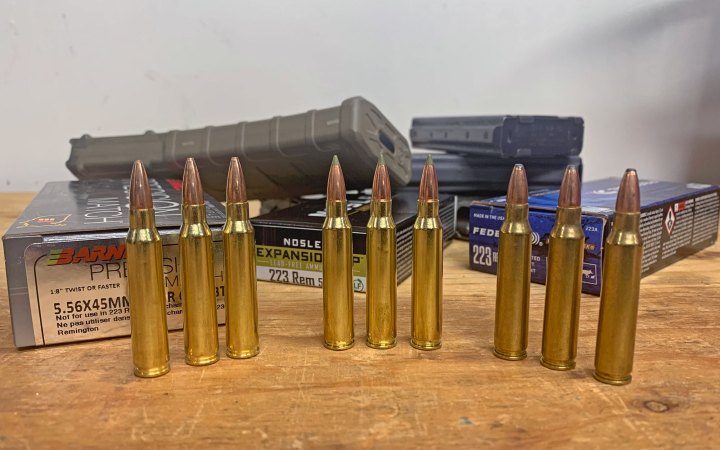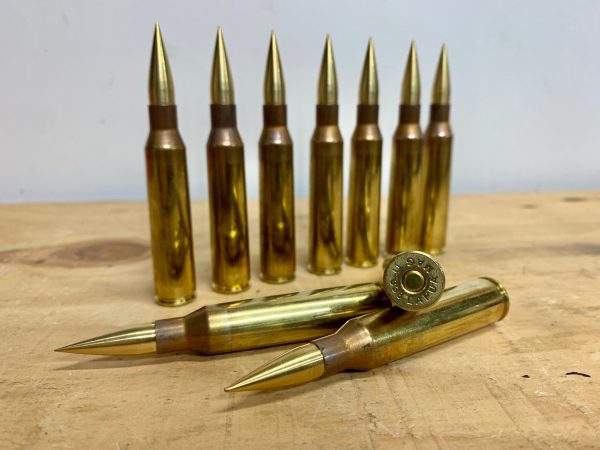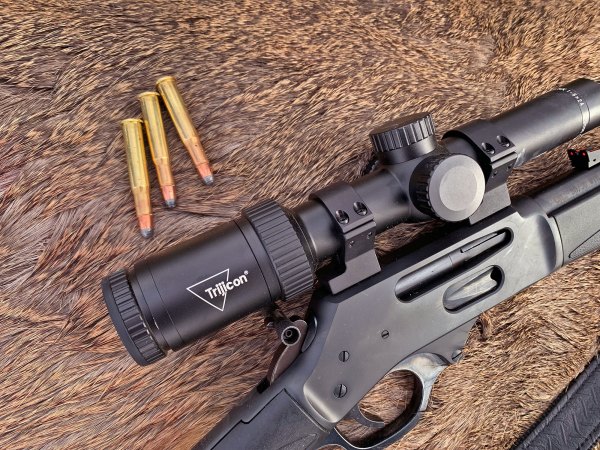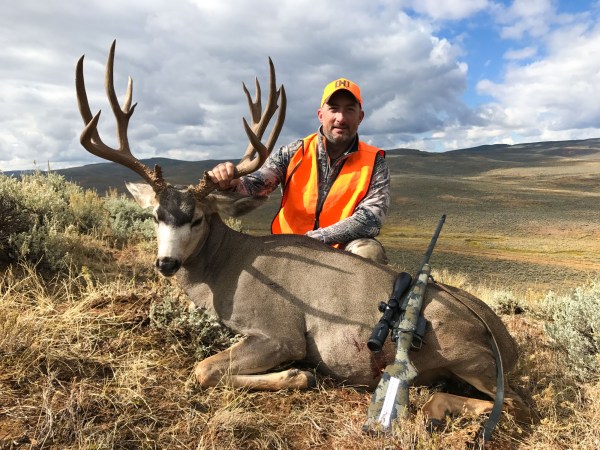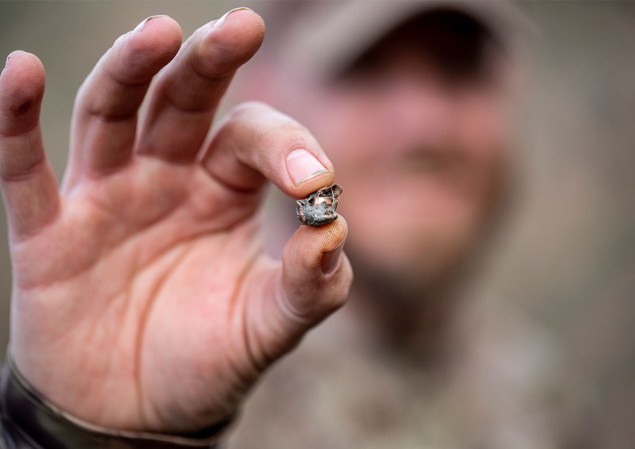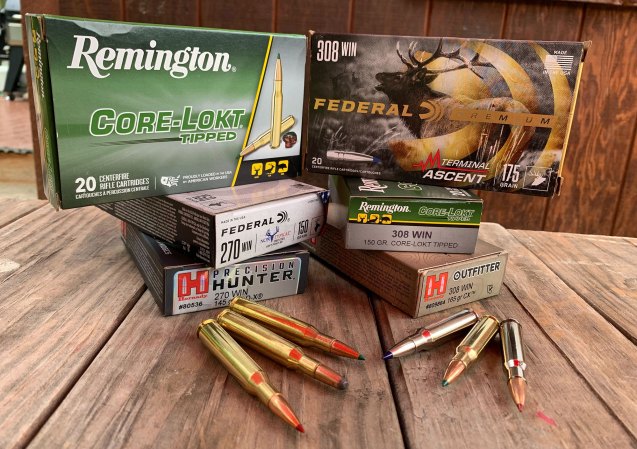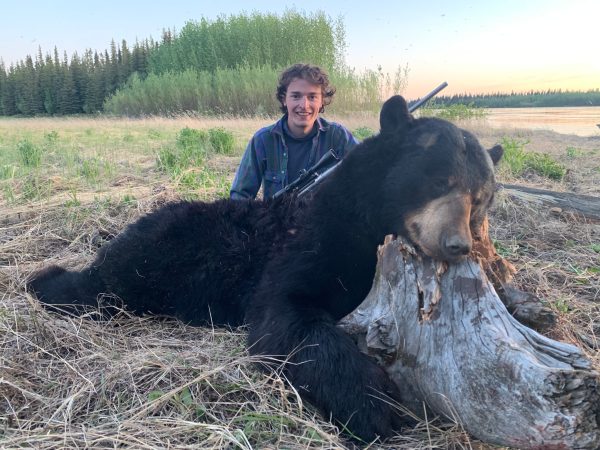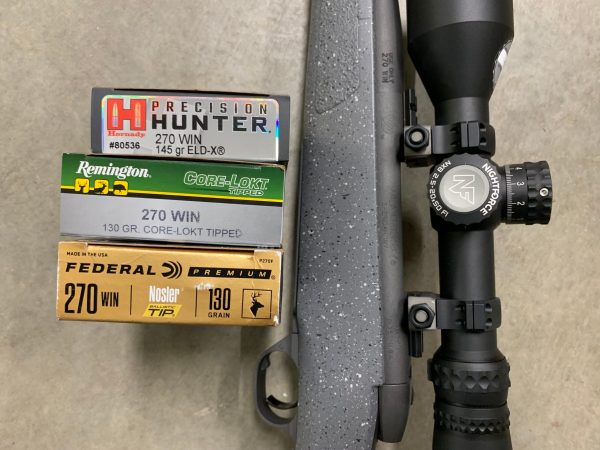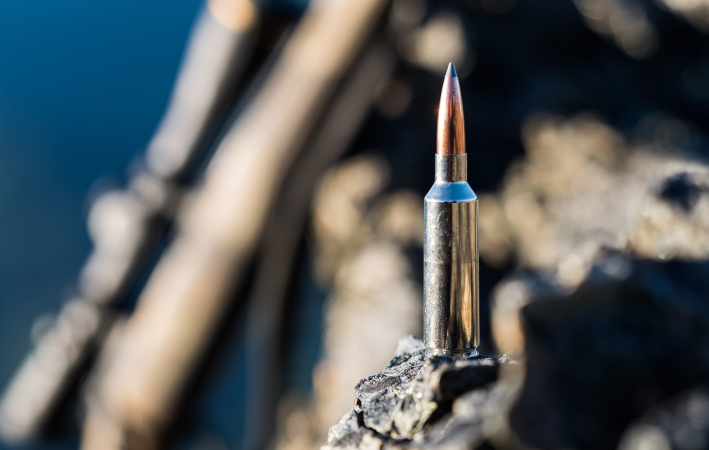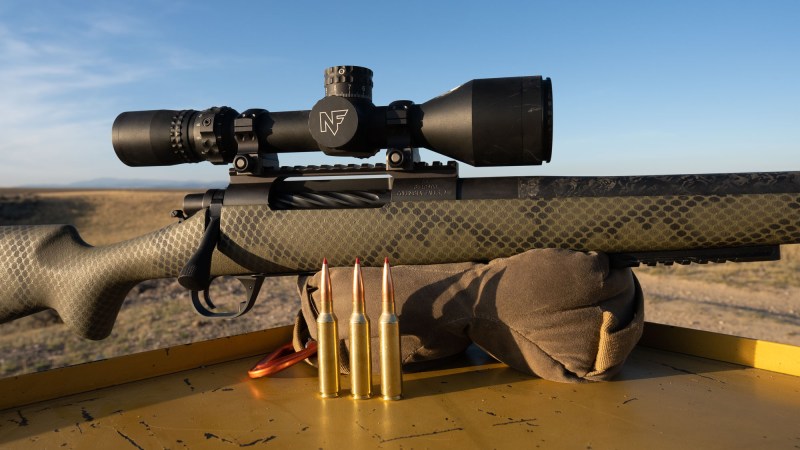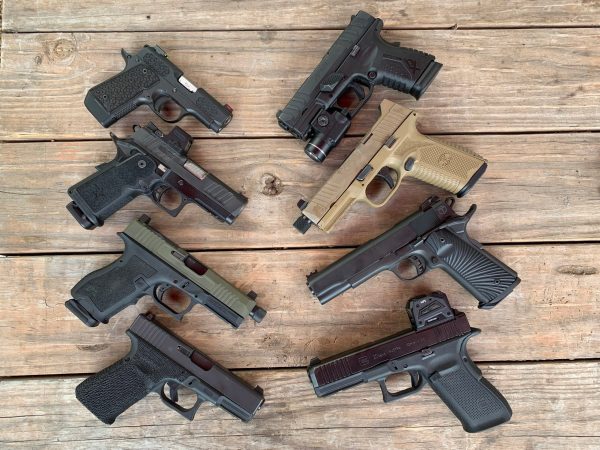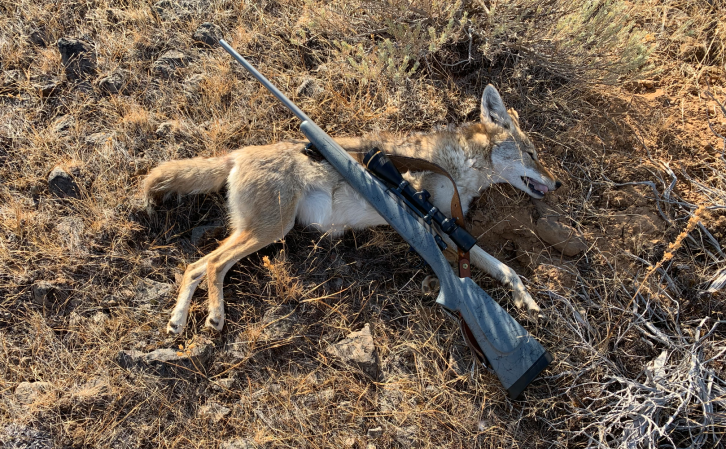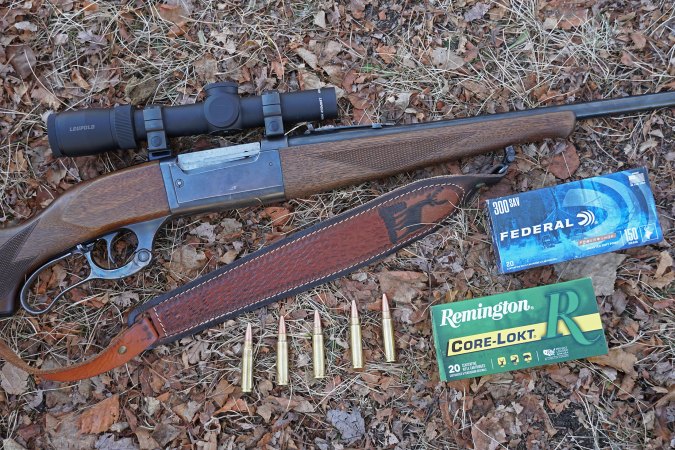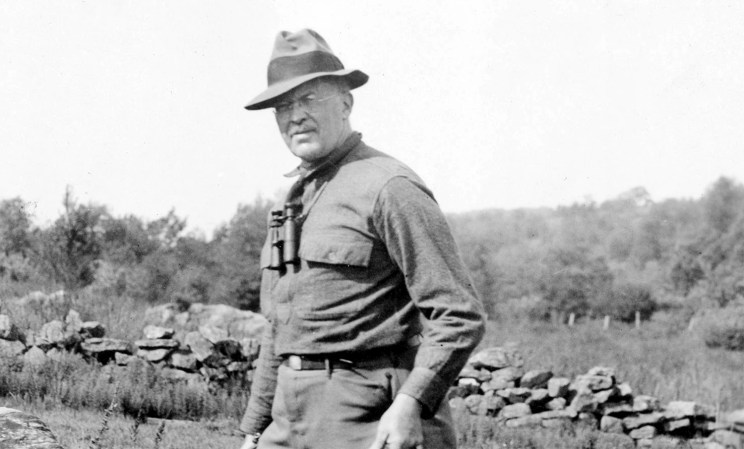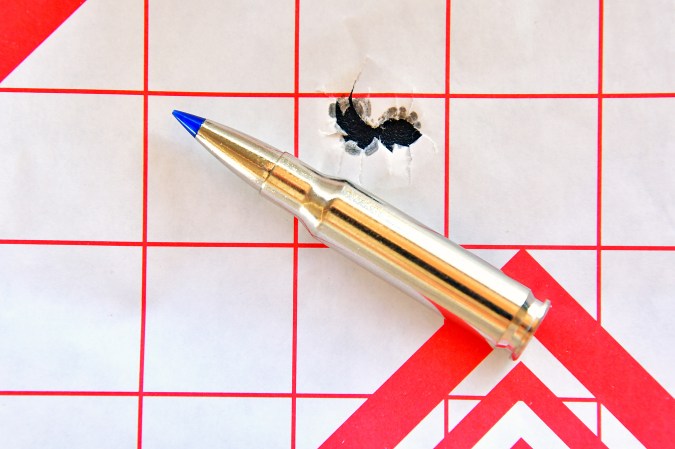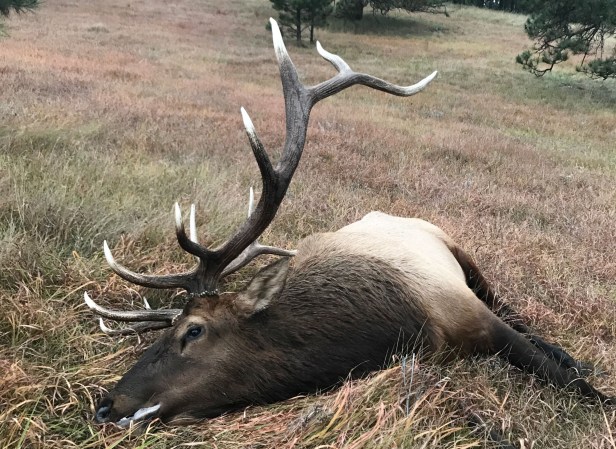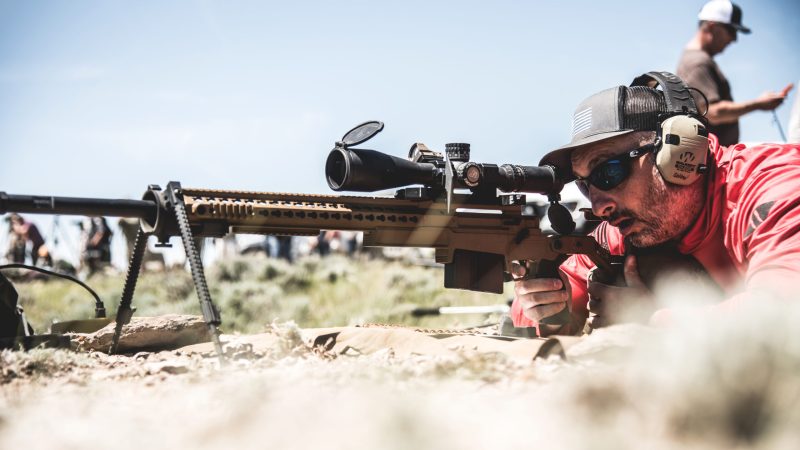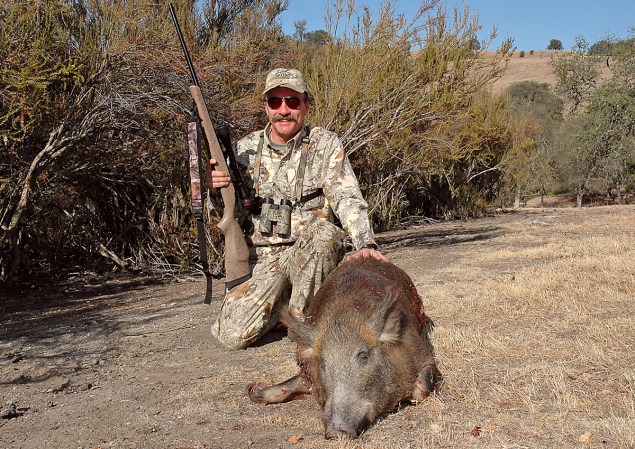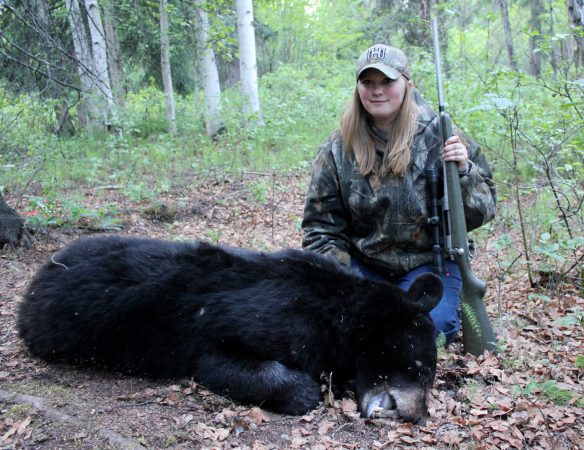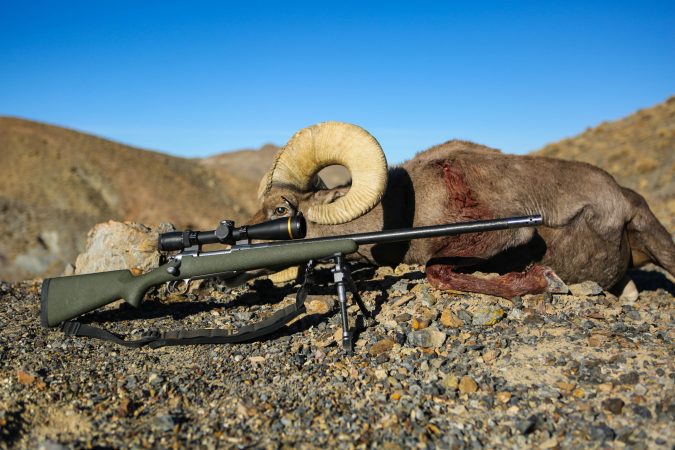We may earn revenue from the products available on this page and participate in affiliate programs. Learn More ›
There are four solid ballistics reasons why I’m an evangelist for the .280 Ackley Improved, and I’ll detail them below, but the cartridge has had its hooks in me since 2015 — a hunting season for the ages.
My twin boys were 14 years old that October, and together they weighed barely 200 pounds. Merlin had drawn a cow elk tag for the Missouri River Breaks near our home, and both were leaning into deer season, hoping to kill the biggest bucks of their young hunting careers.
Merlin’s go-to rifle had, up ‘til then, been a Ruger No. 1 chambered in .243 Winchester. He had made a living his first three deer seasons as a neck shooter, and though I cautioned him about the hazards of that particular shot, he hadn’t yet had a wounding loss. I didn’t want his first to be on a cow elk, and besides, I was skeptical about that little .243’s effectiveness on elk-sized game. At the time I was hunting elk mostly with .30 magnums, specifically a .300 Win Mag and a .300 Weatherby Magnum, but also a snappy Browning X-Bolt in .300 WSM. All seemed a little much for a 105-pound strapling.
As I was casting about for a rifle that could deliver 150- to 175-grain bullets for elk and big prairie mule deer without beating up the shooter, I recalled my affection for the .280 AI.
.280 Ackley Improved Specifications
- Bullet diameter: .284
- Case length: 2.525 in
- Overall length: 3.330 in
- Bullet weights: 120 to 175 grains
- Case type: Rimless, necked
- Max. average pressure: 60,000 PSI
- Parent case: .280 Remington
Ballistics
My first Ackley was a left-hand Montana Rifle Company Model 1999 that I used mainly for open-country mule deer hunting. Load development helped me settle on the 150-grain Nosler AccuBond ahead of slower-burning powders. I used 59 grains of Reloder 22 for my handloads, though I also had very good luck with the 160-grain AccuBond in Nosler’s Trophy Grade factory ammunition.
This is as good a time as any to detail the first ballistic advantage of the .280 AI. With my handload, I pushed that 150-grain AB at 2,980 fps, and I was nowhere near maximum pressure.
In order to get equivalent performance out of the .280 Remington, the parent case for the Ackley, I’d have to use 55 grains of RL22, which is right at maximum pressure, and I’d still be 200 fps slower. Or I could step up to the 7mm Rem Mag and load 64 grains of another slow-burning powder, N165, to get the same velocity. But that 7mm Mag is unpleasant to shoot, and I didn’t want to put a slender young hunter behind such a notorious kicker.
Below, you can see the ballistics for the .280 Ackley compared to 7mm Rem Mag and .270 Win.

Outdoor Life
The Ackley represents a nice middle ground, the distinctive 40-degree shoulder angle allows for ample powder capacity, but it burns efficiently, producing excellent velocities with less powder and recoil than the 7mm Rem. Mag. Especially in my 9-pound Montana Rifle Company rifle, less-than-max handloads and nearly all factory loads are very bearable to shoot, even for young hunters. That rifle is also exceptionally accurate and isn’t fussy to shoot, both advantages for new hunters who convert confidence in their gear into success in the field.
Both boys shot very good mule deer bucks with the .280 AI that season — we shot a combination of my 150-grain AccuBond handloads and Nosler’s 160-grain AccuBond factory loads — and then it was time for Merlin to go after elk. In the open country of the Breaks, it’s common to be confronted with 300- to 400-yard shots at wary late-season elk. We had practiced out to 300 yards and I counseled my son that neck shots weren’t going to be allowed in this particular case. He’d need to make a clean vital shot since the consequences of a wounding hit might mean miles of open-country blood-trailing, less than ideal on any hunt and particularly so on the final day of the season.
We finally picked up the trail of a cow and calf in the fresh snow and followed them into a shallow coulee. We spotted them at 500 yards, and worked into 350. Merlin, set up behind a bipod, said he felt confident, and held on the high shoulder of the calf. As I watched through my binocular it appeared the shot was low, and I feared for the worst, urging Merlin to rack another round and be ready to keep shooting until the calf ran out of sight. That wasn’t necessary. The calf turned twice, looked ready to join the evacuating herd, and then fell over dead in the snow. The AccuBond had torn away the lower lobe of the heart.
This brings up the second ballistic advantage of the Ackley. It’s a relative flat-shooter, which is noteworthy since it didn’t grow up in the era of modern cartridge development or high BC bullets. Instead, it gets there with a satisfying ballistic curve, starting right at 3,000 fps, and trundling along at about 2,600 fps at my zero distance of 200 yards. At 400 yards it retains 2,350 fps, but that 150-grain AccuBond still retains 1,860 foot-pounds of energy at 400 yards.
With that 200-yard zero, the AccuBond had dropped about 13 inches. At 400 yards, it would hit about 18 inches low. I’ll take that: basically still in the vitals of an elk for a dead-on hold out to as far as I can ethically shoot. That’s also an easy aiming solution to communicate to a new hunter in the energized moments of a shot. Hold on the upper third of the animal, and expect to drop a bullet in the vitals anywhere from 100 out to 400 yards.
Available Rifles and Loads
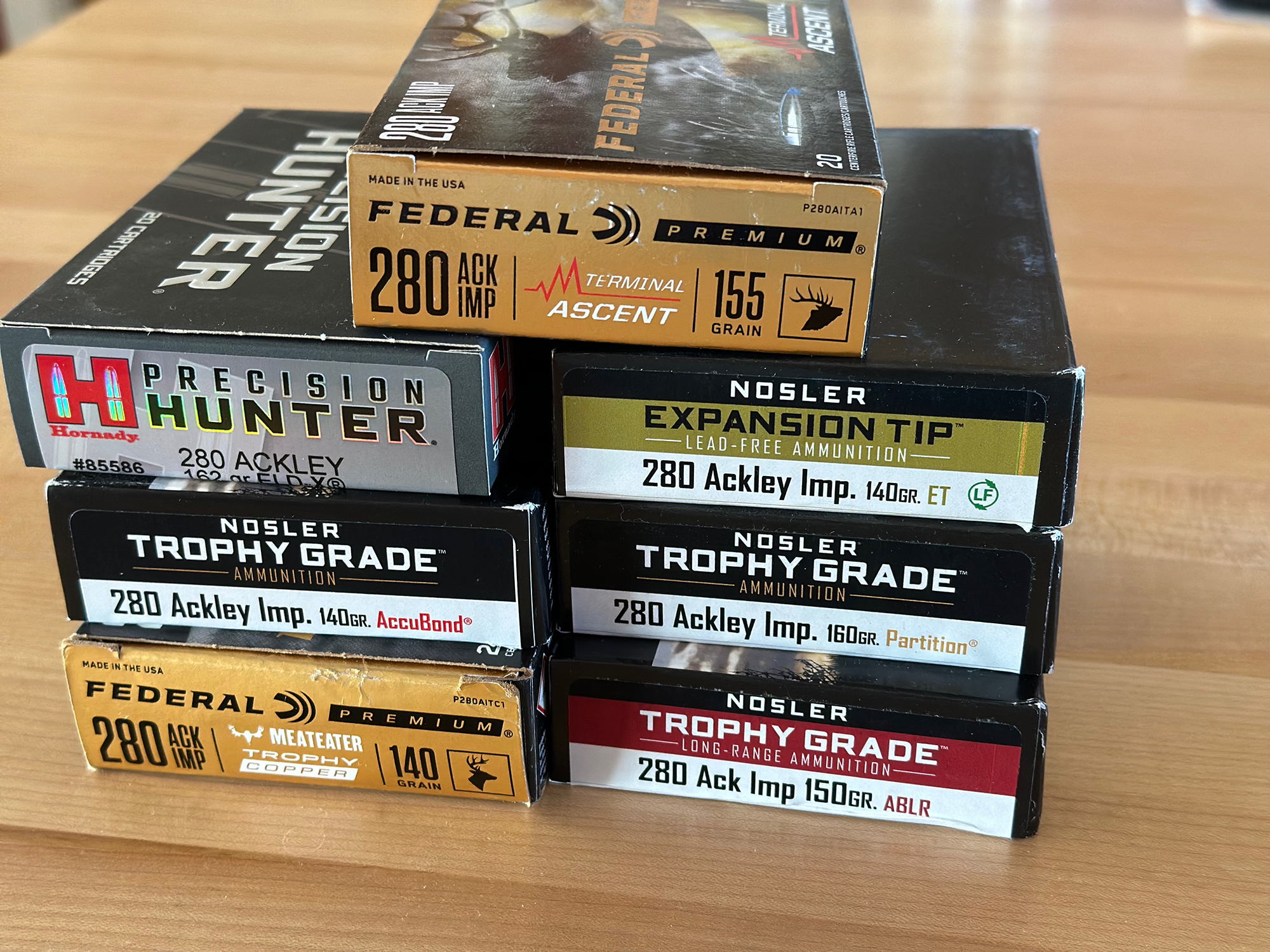
Andrew McKean
I still hunt with that MRC gun, but when Savage came out with its Model 110 Ultralite, a 6.5-pound rifle with a PROOF Research barrel and its AccuFit stock, I ordered one in .280 AI and still use it for everything from Montana pronghorn to some of my work hunts.
That included one of the most remarkable Western hunts of my career, a draw hunt for Columbia whitetail deer in southern Oregon. These little whitetails had been under federal protection for decades, but a combination of habitat work and careful management allowed Oregon to open a hunting season a few years ago. I was lucky enough to draw a tag, and took my .280 AI Savage to Roseburg for the hunt.
This brings up my third ballistic point of order for the .280 AI. There are more factory loads, and a wider variety of bullet weights and types than ever before.
Factory loads on my shelf range from the 140-grain Trophy Copper from Federal to the 140-grain AccuBond, the 150-grain AccuBond Long Range, the reliable 160-grain Nosler Partition, and Nosler’s 140-grain lead-free Expansion Tip. Hornady loads the .280 AI with its excellent 162-grain ELD-X bullet.
Other factory loads include the 120-grain Ballistic Tip, the 175-grain Nosler AccuBond Long Range, and Federal’s 168-grain Berger Hybrid Hunter. I settled on Federal’s excellent 155-grain Terminal Ascent for the Oregon hunt, partly because it shoots lights-out in my Savage, and partly because in my experience in other calibers it performs well at modest ranges, and still expands reliably at ranges beyond 500 and 600 yards. I had no idea how far I’d be required to shoot in Oregon.
As it turns out, 200- to 300-yard shots were the norm in the Umpqua River valley where I hunted, and I took a dandy Columbia whitetail at about 275 yards with the Terminal Ascent. The recoil was so mild, even in a lightweight rifle without a suppressor or muzzle brake, that I stayed in my scope to watch the hit. Which brings up my fourth and final ballistics assessment of the .280 Ackley.
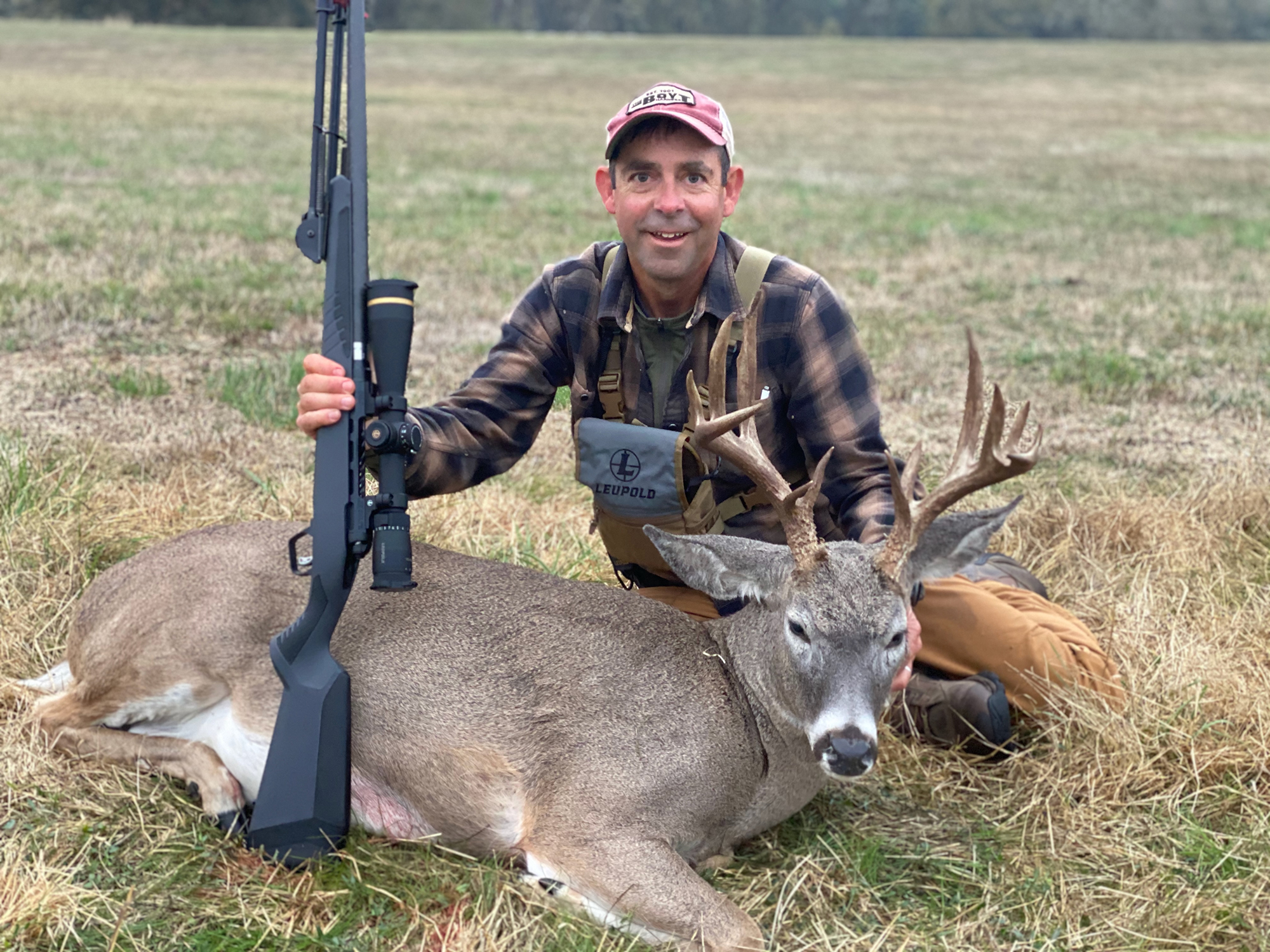
Andrew McKean
I’m a fan of the new generation of cartridges with blown-out shoulder dimensions that deliver magnum-like performance without belted cases, but unless you have a perfectly solid shooting position, expert ability, and a muzzle device, you are unlikely to watch a hit unless you turn your scope down to the lowest magnifications. This is true for the 28 Nosler and its kin, including the 26 Nosler, 30 Nosler, some of the PRC cartridges, and many of the proprietary Weatherby loads. These cartridges have notable muzzle jump, especially in lightweight rifles.
Read Next: The Best Elk Hunting Calibers
.280 AI History
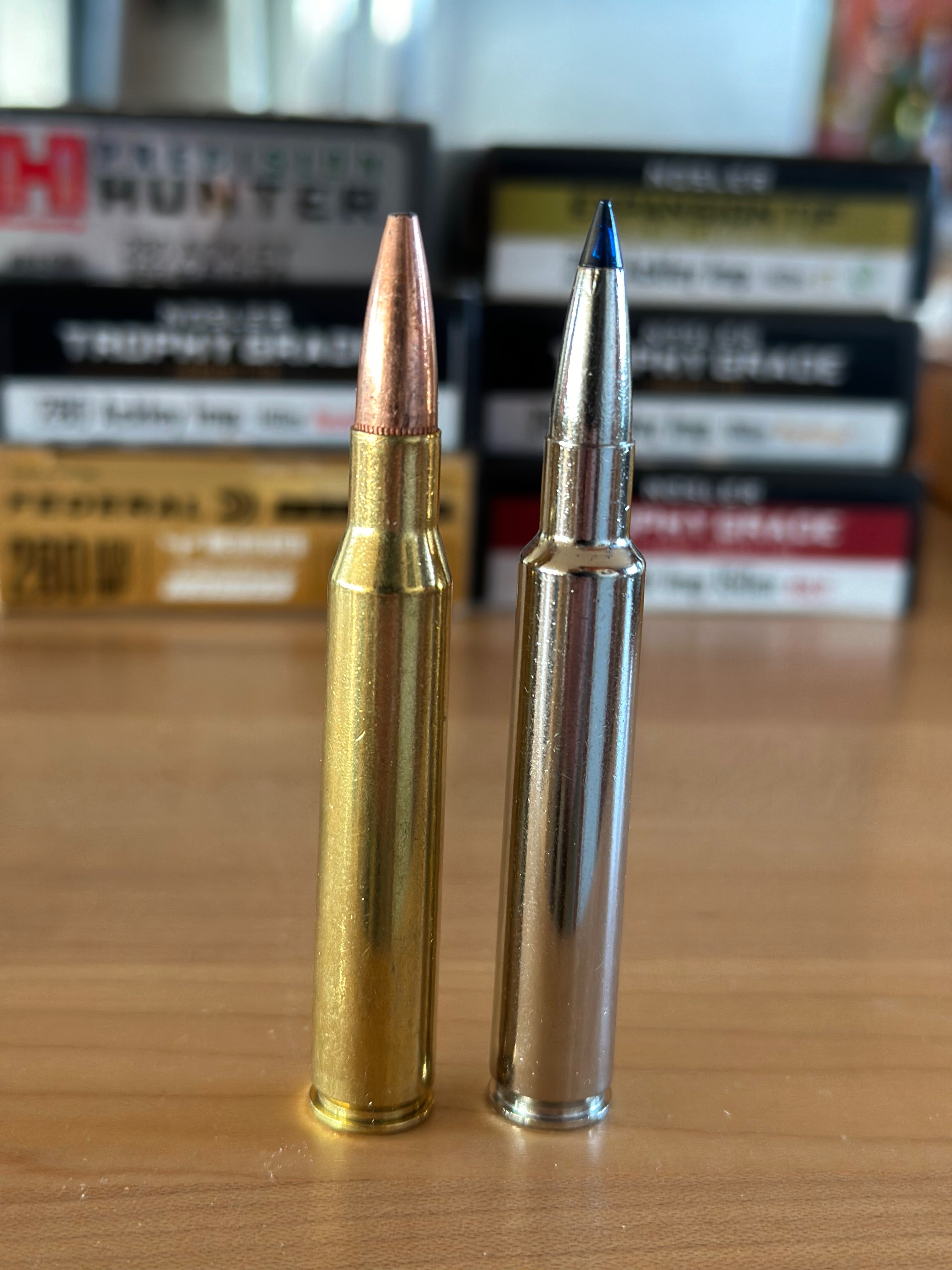
Andrew McKean
My last point in favor of the old .280 AI is its backstory. In this era when we have a new super cartridge hitting the shelves every couple months, the Ackley was a good idea that started slowly but has developed serious staying power.
The godfather and namesake of the cartridge is wildcatter Parker Ackley, who recognized the value of the .280 Remington, introduced in 1957 by Remington, which was hoping to have the same success with a 7mm cartridge that Winchester had enjoyed by necking down the .30/06 to .270.
The .280 Rem. never really caught on, probably because the wildly popular .270 Win. could do everything it might have achieved. But Ackley recognized that if he could steepen the shoulder angle of the .280 to 40 degrees in order to expand its powder capacity, he could get velocities with lighter 7mm bullets that pushed the 3,000 fps boundary, pretty spiffy for the Kennedy Administration. The .280 Ackley developed a dedicated following in the reloading and wildcatter communities, and had Nosler not recognized its commercial appeal, it would probably be relegated to a good idea that never really caught on.
But in 2008, Nosler standardized the .280 AI and started loading factory ammo and selling unfired brass. Of course, most wildcatters had all the brass they needed, since the cartridge has the added value of using fire-formed .280 Rem. cases with the pushed-out shoulders.
Final Thoughts on the .280 Ackley Improved
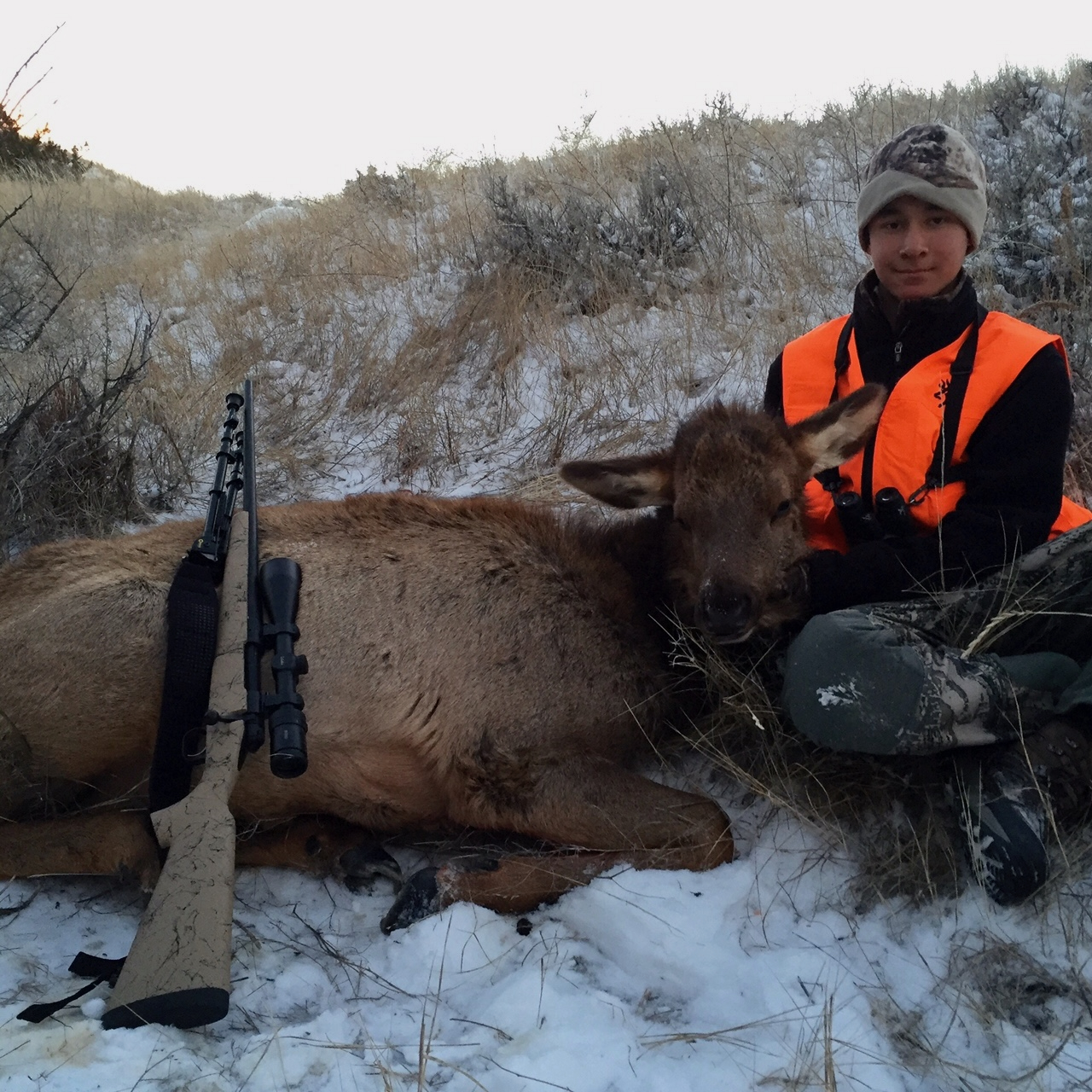
Andrew
The Ackley still achieves its best results with handloads, simply because its 10 percent greater powder capacity (compared with the .280 Rem.) gives tinkerers the choice of loading lighter bullets hot or heavier bullets with high ballistic coefficients at good starting velocities that can be maintained over lots of real estate.
That ballistic capability is great, but I judge a cartridge by its performance in the field, and the Ackley’s ability to freight a wide range of bullet types and weights, its mild recoil and long barrel life, and its flat trajectory make it my choice for the top all-around Western cartridge. Based on their experience, my twin boys concur.

